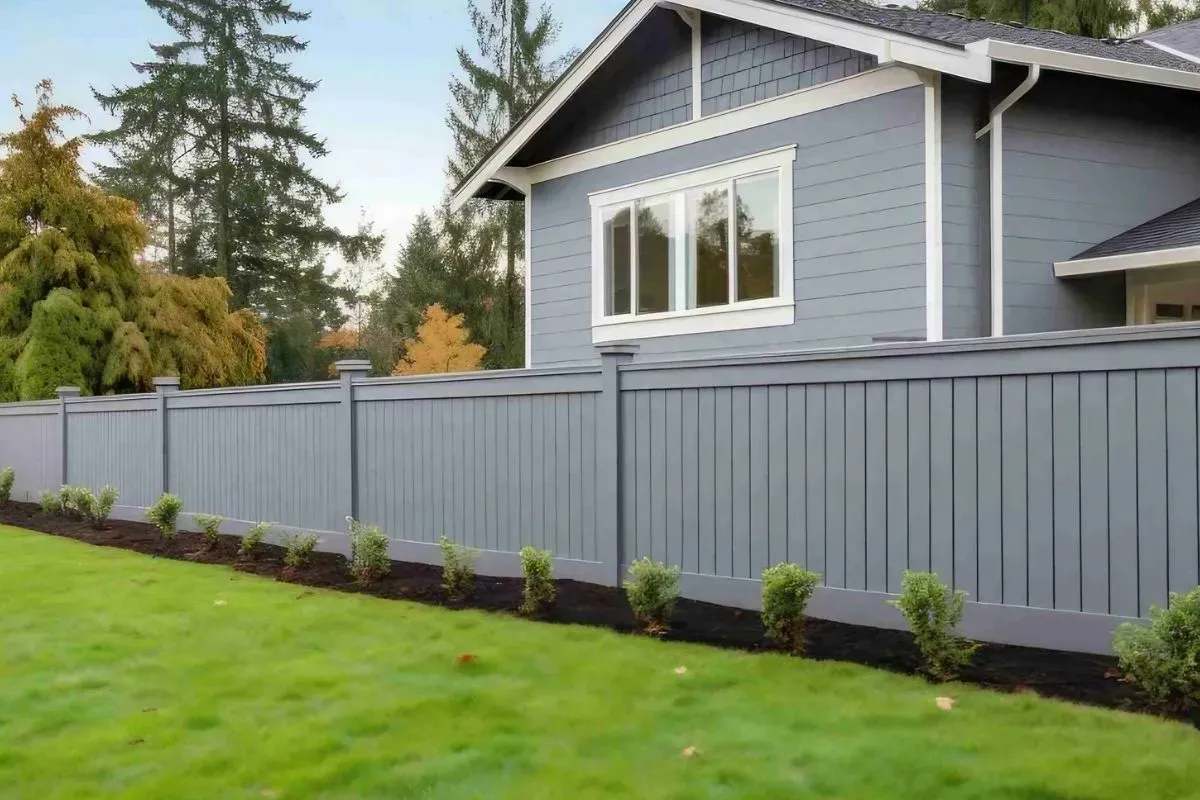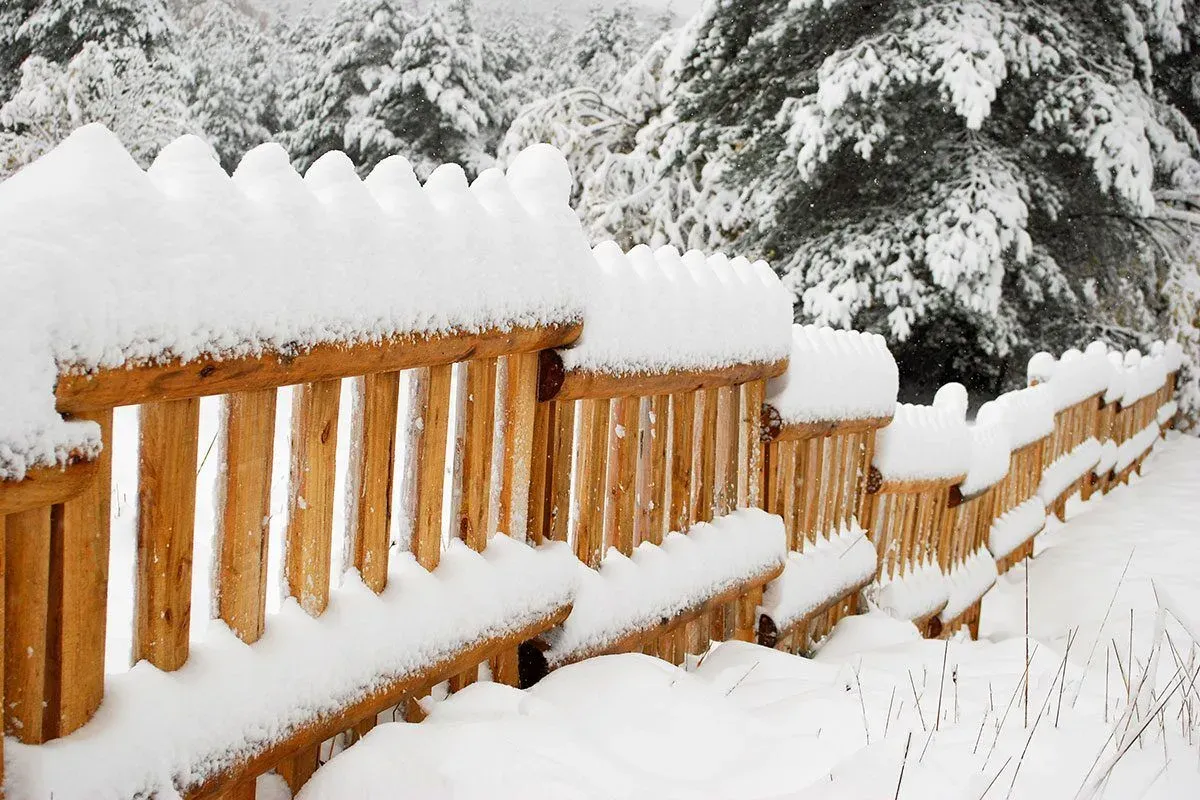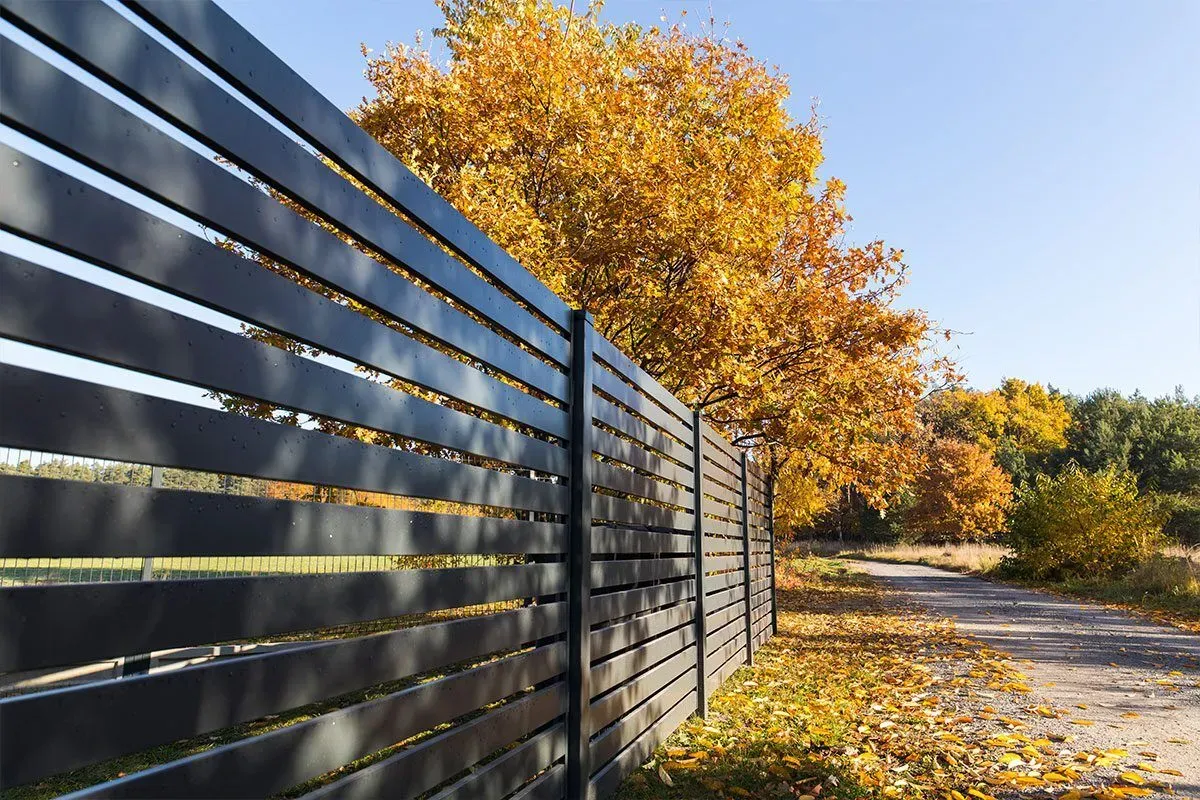In today’s digital age, our interactions extend far beyond the physical world. While social media connects us globally, a surprising trend is emerging: a hyperlocal focus on connecting with those immediately around us. Neighborhood apps and online communities are booming, creating a sense of community and shared experience.
To understand how these online spaces are impacting residential communities, we conducted a survey of over 890 American homeowners to explore how people leverage neighborhood apps for important decisions.
Read on to learn how Americans interact with these online groups and their impact on home security and moving decisions.
Key Takeaways:
- More than 80% of homeowners actively use neighborhood apps to engage with their community.
- Over half of Americans use neighborhood apps to inform their moving decisions.
- Over 70% of those using neighborhood apps reported seeing crime or suspicious activity.
Over 80% of Homeowners Actively Use an Online Neighborhood Community App
More than 80% of Americans actively use an online neighborhood community app, with only 20% claiming they rarely or never use one. A significant portion of respondents (41%) reported using these apps daily, highlighting the importance of these platforms in people’s daily lives.
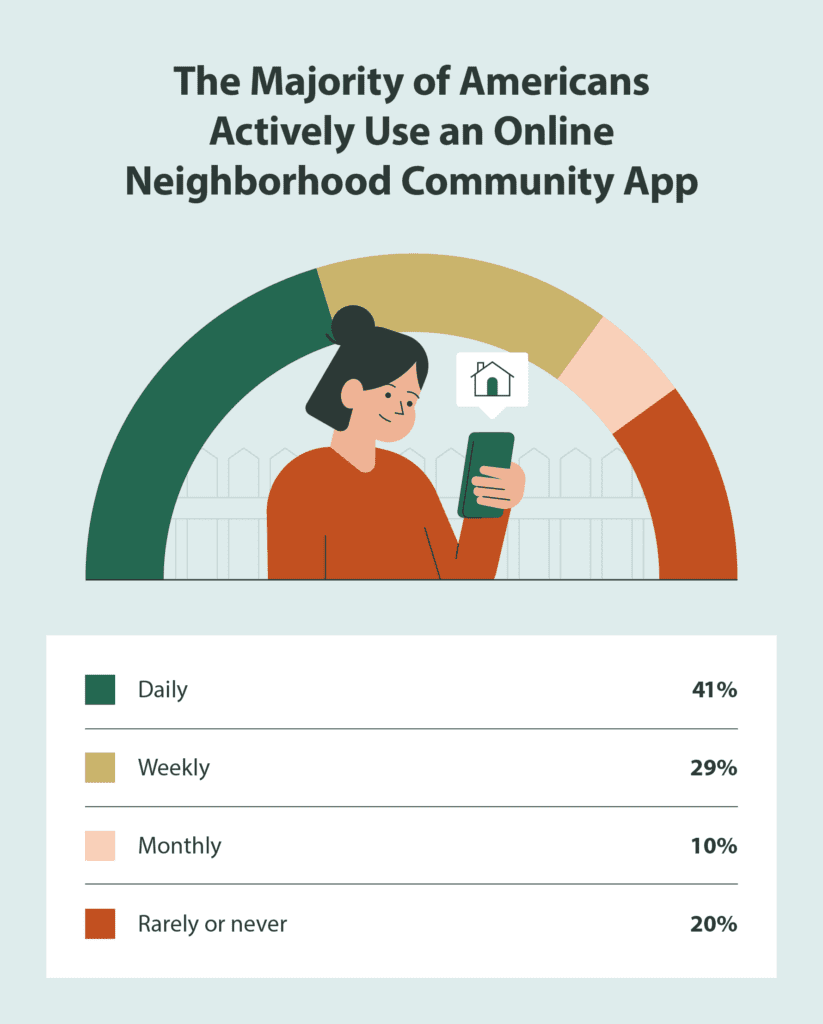
The survey shows that a large proportion of people across all age groups are active on neighborhood apps, with particularly high daily usage among those ages 45-60 (59%). However, people over the age of 60 rarely or never use an online neighborhood app (35%).
This trend of using neighborhood apps is likely to continue. Johnny Austin, real estate investor and owner of Sell My House Now, notes that these apps are “advertised through HOAs and neighborhood watch programs to improve communication and safety.”
In fact, he says that “in most new housing developments, these applications have become almost universal,” demonstrating a clear move toward blending technology with community living.
Facebook Groups Are the Most Used Online Platform To Connect With People in a Neighborhood
Over the past decade, online platforms have transformed how residents connect with their communities. In 2014, around 25% of American communities used Nextdoor, a platform specifically designed for neighborhood communication.
While Nextdoor remains popular, with 30% of respondents using it, our survey reveals a significant shift toward Facebook groups.
Nearly 43% of respondents reported using local Facebook groups most frequently to connect with neighbors. This dominance is likely due to Facebook’s established status and how easily it fits into people’s existing social circles. Facebook also launched ‘Facebook Neighborhoods’ back in 2021, making it easier to connect with others in their area.
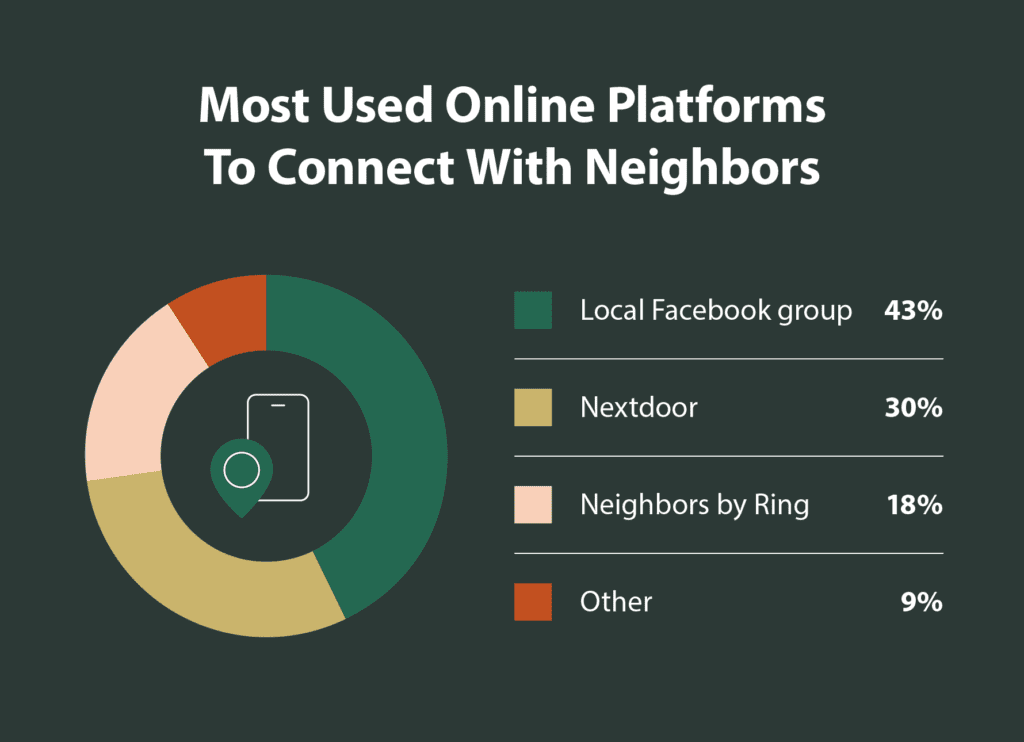
However, older adults showed a different preference, with nearly half (47%) of respondents over 60 favoring Nextdoor as their platform of choice.
Over 70% of Respondents Cite Suspicious Activity and Crime as Top Issues Within Neighborhood Apps
Beyond building community, neighborhood apps play an important role in security awareness. Over 70% of respondents reported seeing information about crime or suspicious activity on these platforms. This shows the power of these apps as real-time communication tools for residents to share concerns and stay informed.
The survey revealed that suspicious activity is the most frequently discussed topic, with 50% of respondents claiming it as one of the top issues seen in a neighborhood app. Package theft was the second most common crime-related concern mentioned in apps (37%).
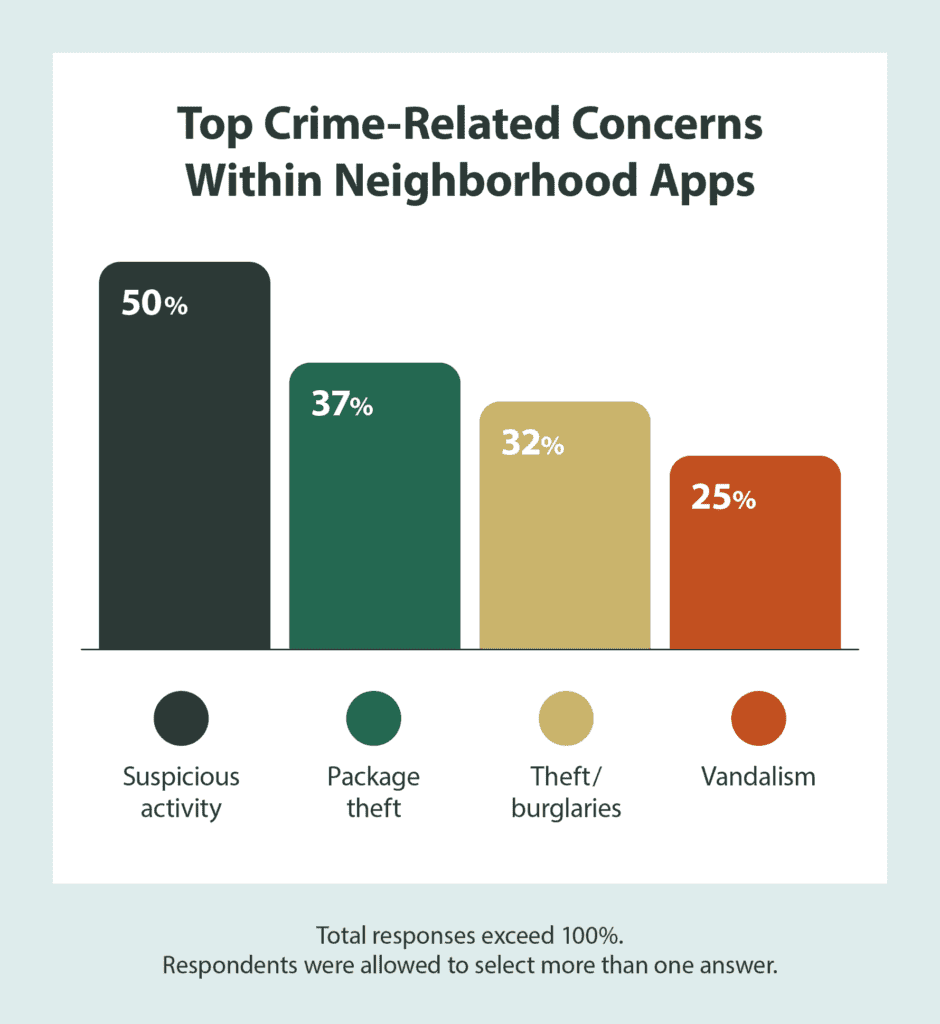
Jordan Woolf, CEO of real estate investment company We Buy Houses In Bama, notes, “Access to a neighborhood app can influence a home buyer’s perception of safety, but it can be a double-edged sword.”
While these apps allow residents to share information about local happenings, including safety concerns, it may create a skewed perception. Woolf says, “They often focus on negative events, like petty theft or suspicious activity, which can make an area seem less safe than it actually is.”
More Than Half of Homeowners Have Taken Security Measures Based on Information Discussed in Neighborhood Apps
Based on the information found in neighborhood apps, over half of respondents (55%) took steps to enhance their home security:
- 38% installed security cameras
- 34% increased outdoor lighting
- 32% changed locking mechanisms on doors and windows
- 30% upgraded their fence for security reasons
- 5% other
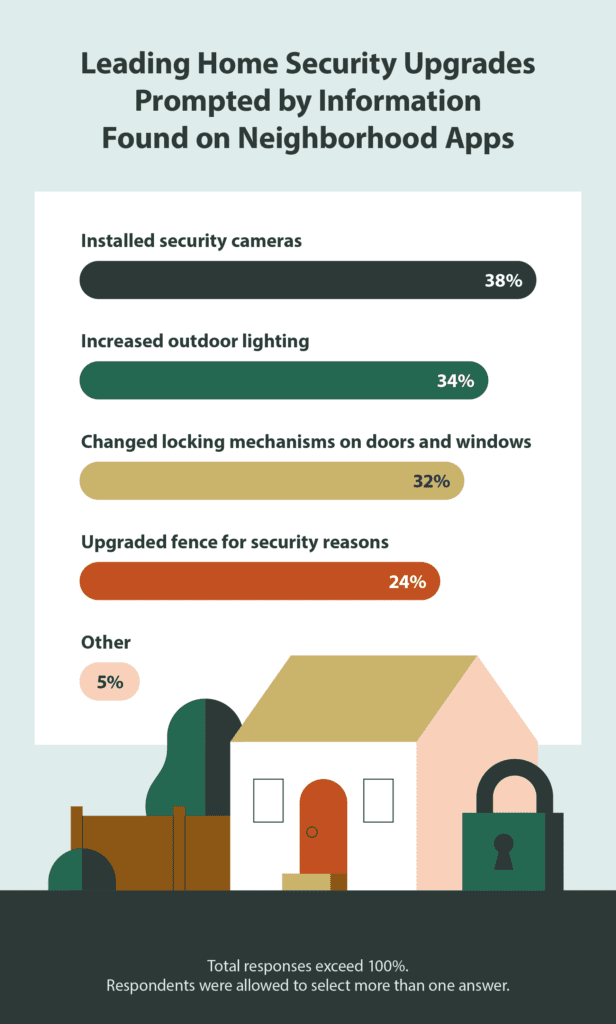
Although suspicious activity was noted as a top concern among survey respondents, a relatively high percentage (45%) did not make any security changes.
There are many reasons why this could be the case, including the fact that 50% of homes already have a security system, or some respondents weren’t concerned about the information they saw in the app or didn’t believe it warranted taking action.
To help improve your security, consider adding a privacy fence (if your neighborhood bylaws allow it).
52% of People Use Neighborhood Apps To Inform Their Moving Decisions
Over half of survey respondents (52%) use neighborhood apps to inform their moving decisions. This highlights the growing importance of online communities for home-buying decisions.
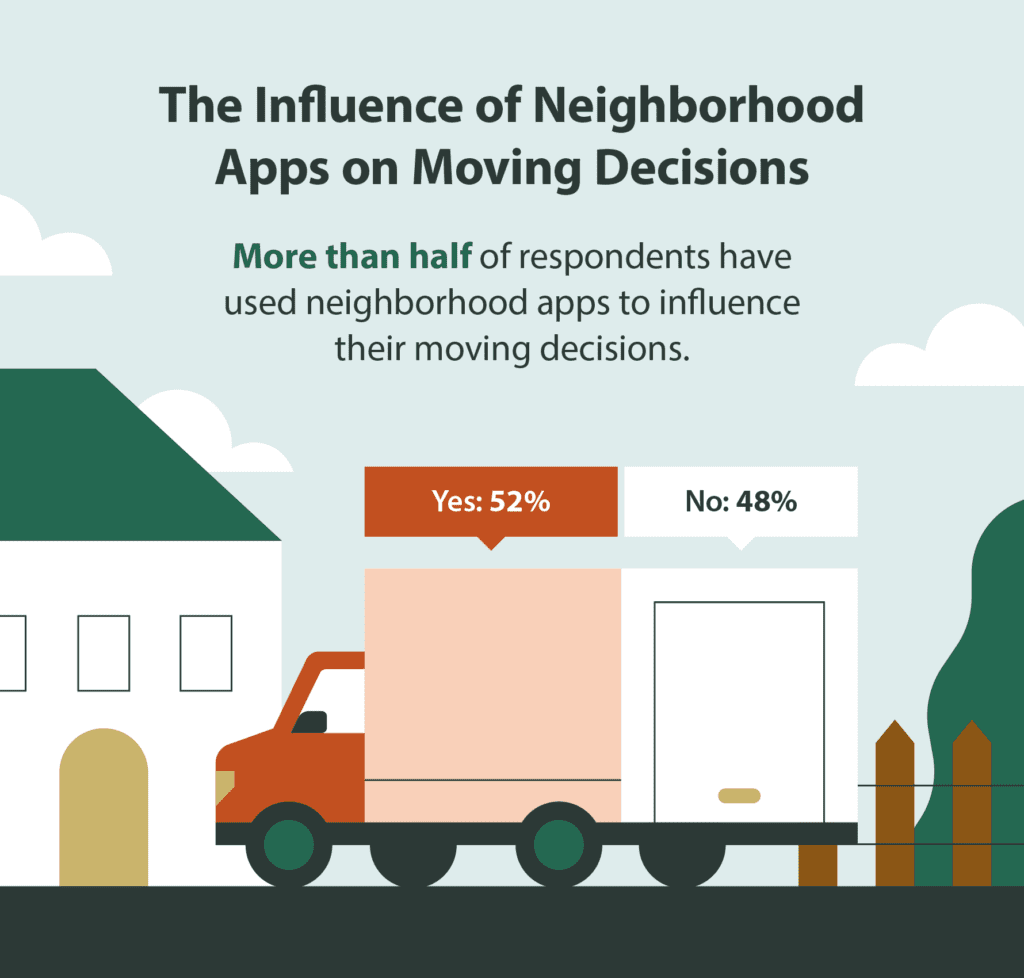
Johnny Austin echoes this focus on community. In his experience as a real estate investor, communities with strong online communities via neighborhood apps can add value to properties, just like good school districts or convenient amenities.
“These apps encourage a sense of belonging among people as well as ensure proactive safety measures within the locality,” says Austin. “When a potential buyer sees that a community actively takes part in its security maintenance and preservation, an additional value is attached to the property price tag.”
Most Americans Still Rely on Other Sources for Security Information
While neighborhood apps are becoming increasingly popular, most Americans still rely on other sources for security information. The top three most popular sources included:
- Talking to neighbors (54%)
- Local crime statistics (50%)
- Social media (42%)
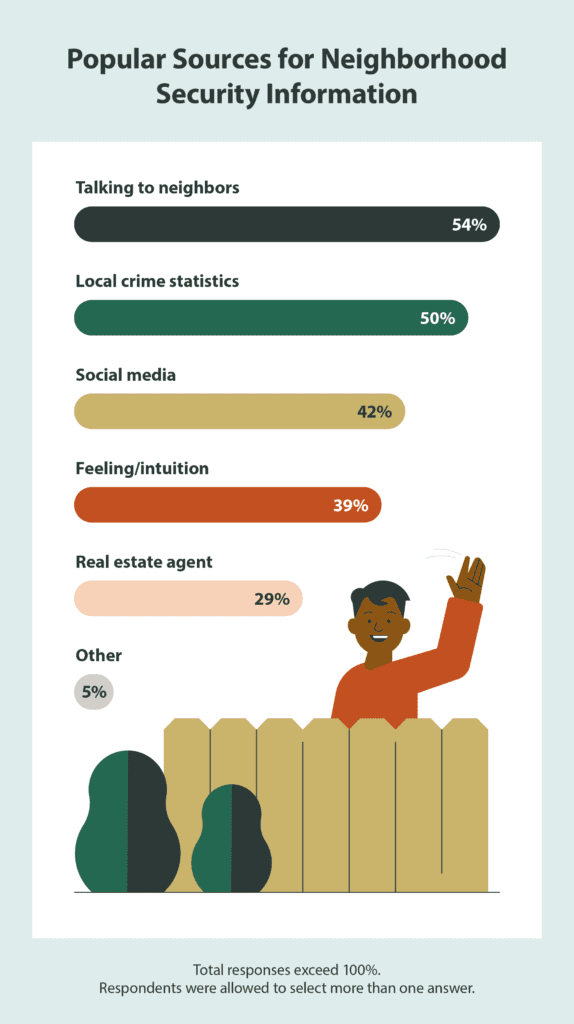
For most people, talking to neighbors is the go-to way to get security information in their neighborhood. However, young adults (18-29 years old) are more likely to rely on social media for security updates. This could be due to a generational shift, with younger adults more likely to hide from their neighbors compared to those over 60.
The survey also found that nearly a third of respondents (29%) rely on real estate agents for security information. This highlights the need for real estate agents to emphasize neighborhood safety to their clients and provide accurate safety information about the area.
5 Tips for Determining the Safety of a Neighborhood
Neighborhood apps are a great way to determine the safety of a neighborhood, but they shouldn’t be the sole source of truth. We talked with real estate professionals about their top tips for determining the safety of a neighborhood, including:
- Drive around the area at different times. See how the area feels during the day, evening, and weekends.
- Look at the physical environment, noting well-lit streets, visible house numbers, and well-maintained sidewalks.
- Look for signs of active community patrols or neighborhood watch programs. Their presence means there’s an action-oriented approach to safety.
- Research detailed crime heat maps from police departments or sites such as CrimeMapping, highlighting particular crime types and places they occur.
- Talk to your realtor. A good realtor will have a deep understanding of the local community, including safety issues.
Help Protect Your Home With Top Rail Fence
Our survey results show the growing importance of neighborhood apps in connecting and informing communities. These platforms help residents share information and build a sense of belonging.
While online communities are a powerful tool for home safety, physical security measures remain crucial. As the survey reveals, nearly 30% of respondents have taken action to improve their fences for security reasons. A strong fence can be your first line of defense against potential crime, providing peace of mind and deterring unwanted activity.
Installing a privacy fence can:
- Deter potential intruders and trespassers.
- Protect your family and belongings from prying eyes.
- Improve your home’s curb appeal and overall worth.
- Match your needs and preferences with various fence heights, materials, and styles to choose from.
- Provide peace of mind so you can enjoy the added security and protection a fence offers.
Combine the power of community with physical security for comprehensive home protection. Invest in a top rail fence today and experience the difference. Ready to upgrade your home’s security? Contact us today for a free estimate.
Methodology
The survey of over 890 adults who own their household ages 18+ was conducted via SurveyMonkey Audience for Top Rail Fence on July 12, 2024. Data is unweighted and the margin of error is approximately +/-3% for the overall sample, with a 95% confidence level.
